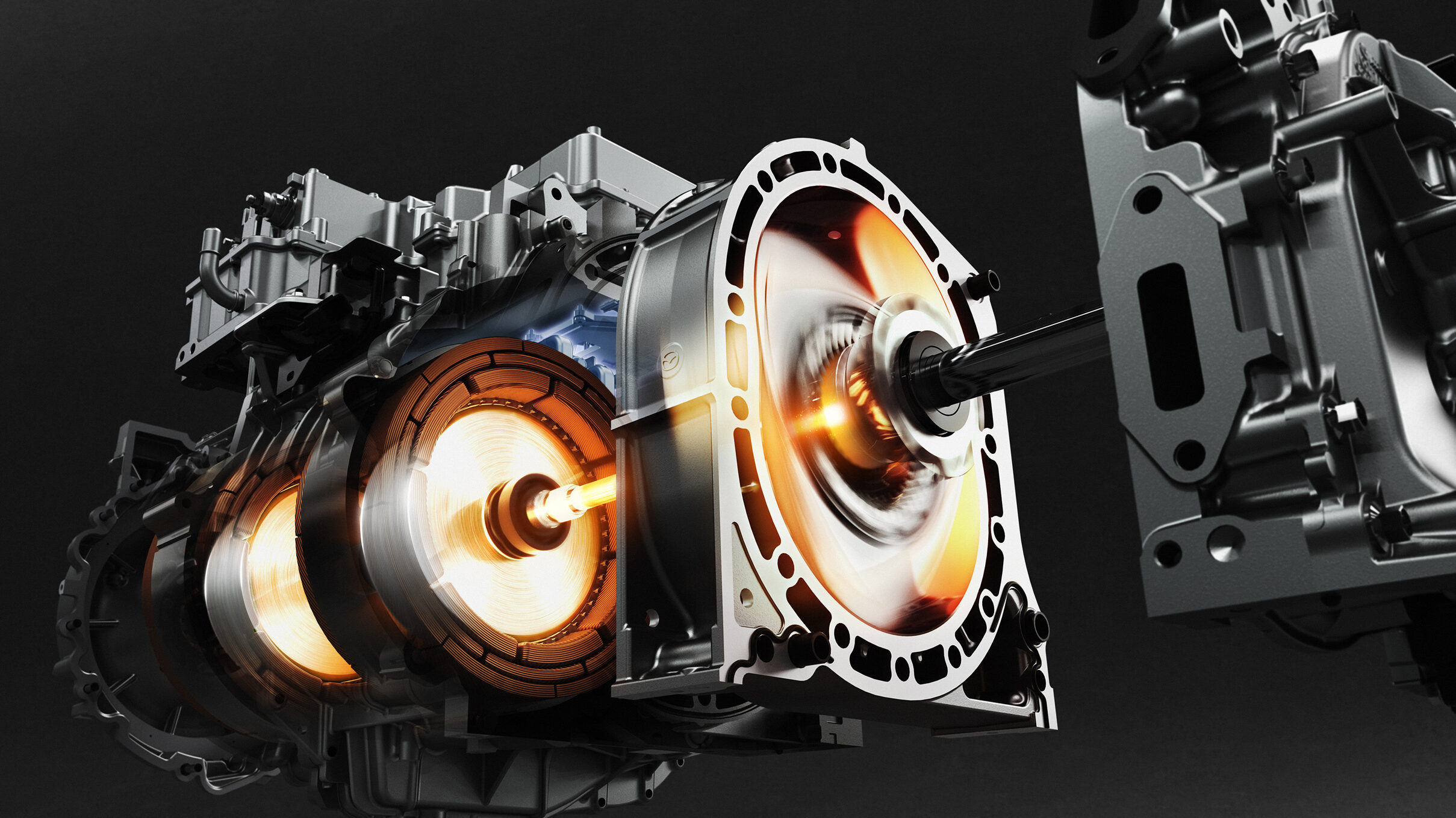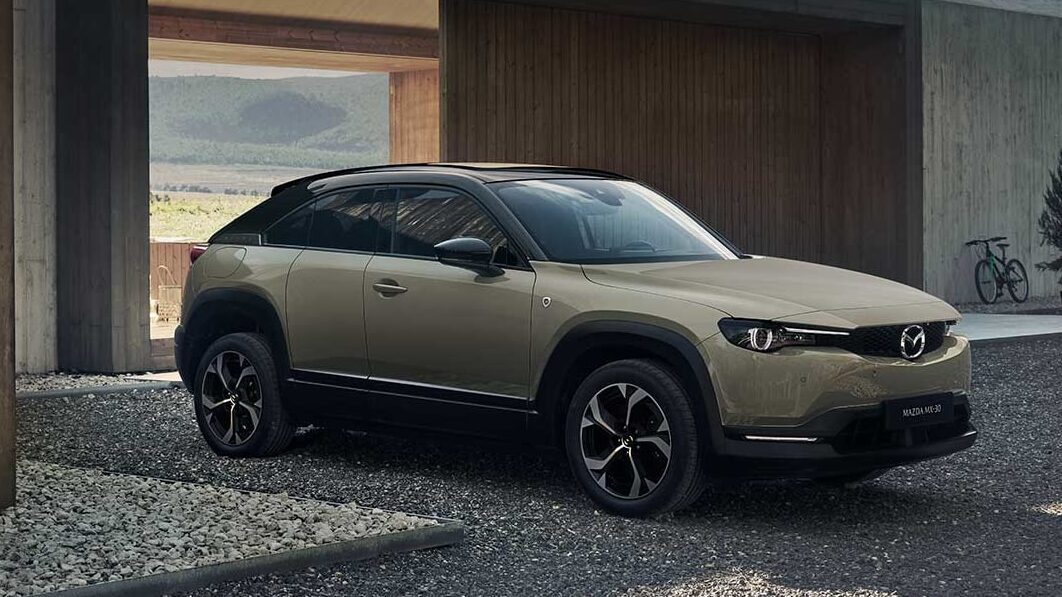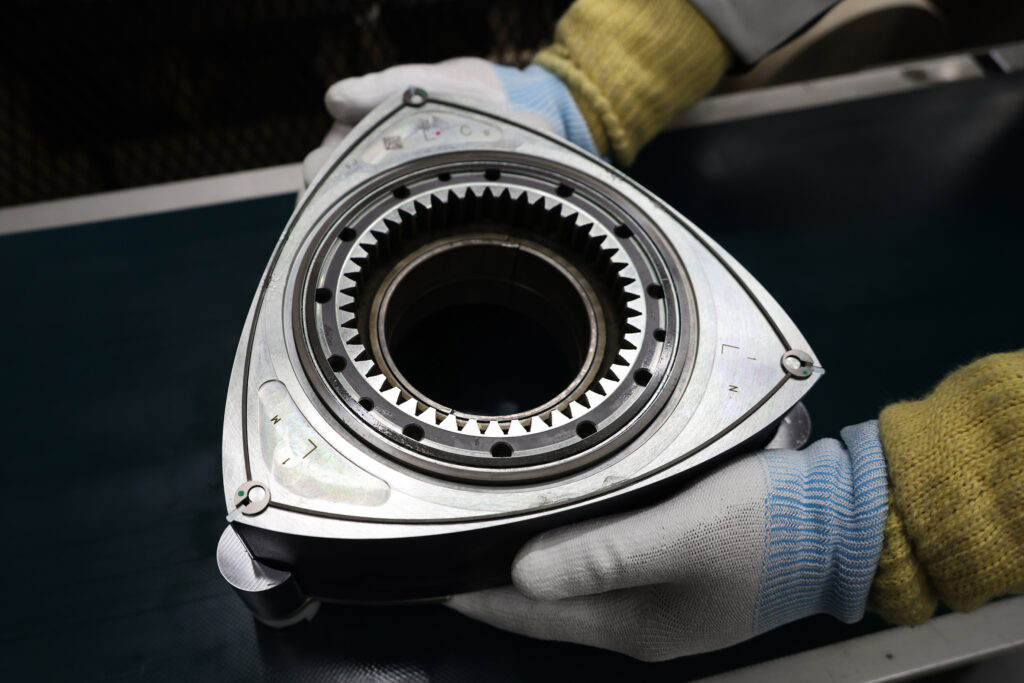Return of the rotary engine – with a twist
- PostedPublished 11 October 2023
Mazda has made a return to the production of rotary engines after an 11-year hiatus – but it’s not for a successor to the RX-8 sportscar.

Previously faced with reliability challenges, the rotary engine is now being reintroduced as a range extender for Mazda’s plug-in hybrid electric vehicles (PHEVs).
Mazda’s decision to incorporate the powerplant into the MX-30 e-Skyactiv R-EV is based on the company’s extensive knowledge of rotary engine development, as well as this engine format’s compact, lightweight design.
The 830cc 54kW single-rotor engine, positioned alongside electric motor and power electronics in the engine bay, weighs 15kg less than the twin-rotor engine used in the RX-8, Mazda’s previous rotary engine model.
Additionally, the engine features direct fuel injection and an exhaust gas recirculation system for efficiency and reduced emissions.

Rotary engines have fewer moving parts, run smoother, and deliver more power than piston engines of the same capacity, although disadvantages can include lower torque output, higher fuel consumption and longevity concerns.
Mazda says the MX-30 e-Skyactiv R-EV can offer a pure electric driving range of approximately 85km thanks to its 17.8 kWh lithium-ion battery pack.
If the battery level drops or when additional performance is called upon, the rotary engine kicks in to generate electricity, extending the total driving range to 600km on a full 50-litre fuel tank.
Peak system outputs of 125kW/260Nm achieve a 0-100km/h acceleration time of 9.1 seconds.
Similarities with the BMW i3 Range Extender that launched a decade ago cannot be ignored, even down to the Mazda’s rear-hinged rear doors and use of sustainable interior materials.

Instead of a rotary engine, BMW’s optional range extender upgrade used a 647cc two-cylinder petrol engine shared with the brand’s C650 scooter.
However, the i3 REx had a small fuel tank, limiting range to around 320km – although it could travel further on electricity alone than the Mazda.
This innovative setup not only provides the benefits of electric driving but also eliminates the common concern of range anxiety associated with fully electric vehicles.
Exclusive to the European market, the MX-30 e-Skyactiv R-EV offers three-phase AC or DC rapid charging, respectively taking 50 and 25 minutes.
Drivers can reserve a specific amount of battery charge during longer trips to ensure emission-free driving in urban environments. The MX-30 e-Skyactiv R-EV also has vehicle-to-load capability, providing a mobile power source of up to 1.5kW.
As well as emitting just 21g/km of CO2 according to WLTP testing, sustainable materials like cork and recycled fabrics.
Mazda says a multi-tone paint application process reduces paint loss and CO2 emissions by approximately 34–37 per cent and a 1.1MW solar power system at Mazda’s Ujina Plant in Hiroshima supplies electricity to charge the newly produced MX-30 e-Skyactiv R-EV vehicles before shipping.
While some enthusiasts may have hoped for a sportier application of the rotary engine, Mazda’s decision to use it as a power generator in an electrified crossover has been a long time coming, with prototypes of the previous-generation Mazda2 light hatch dating back to the early 2010s.
It is rumoured that the next-generation Mazda2 will share the MX-30 e-Skyactiv R-EV’s drivetrain, to the Japanese brand’s almost two million rotary-powered vehicles produced since the launch of the Cosmo in 1967.
- CategoriesIn SightGlass
- TagsHybrid, mazda, plug-in hybrid, SightGlass News Issue 30

